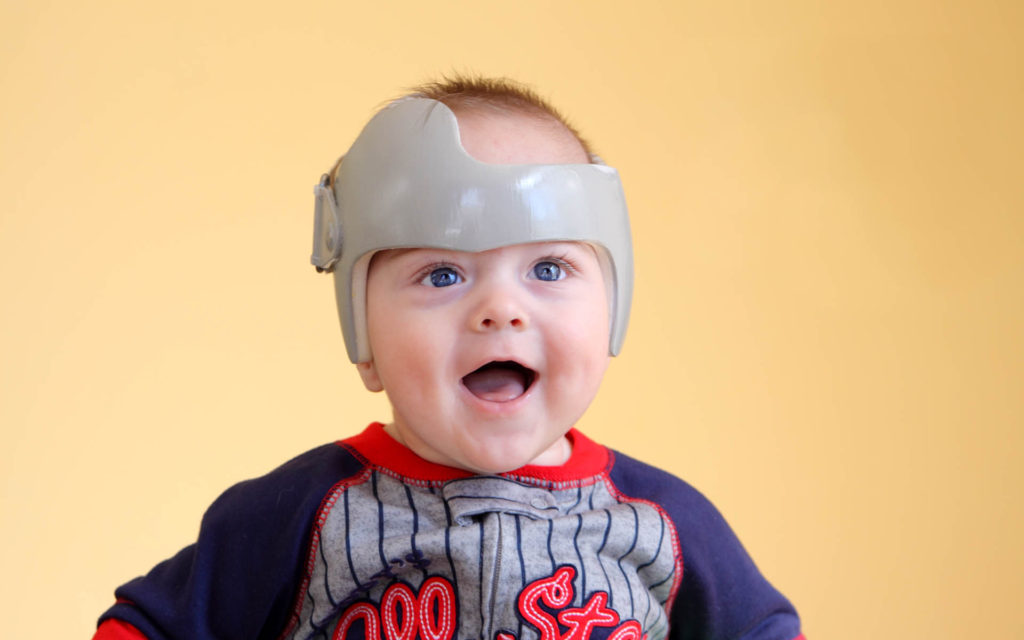Parents researching cranial remolding solutions for their baby often ask us if a 3D printed model or a handcrafted fibreglass helmet is better for their baby. The short answer is, it depends on your baby’s unique needs. Fortunately, unlike many other cranial remolding helmet providers, PBO Group clinics offer both styles. After carefully assessing your baby’s skull, we’ll make a recommendation and craft a helmet using the design that best addresses your baby’s specific needs. Here are some of the factors that will impact the decision on which style of helmet we recommend for your baby.
3D Printed Digitally Designed Helmets
3D printing technology has done wonderful things for cranial remolding helmets. These helmets are much thinner, lighter and faster to fabricate than their fibreglass counterparts. The 3D fabric that lines the helmet wicks away moisture and helps regulate temperature, making this style of helmet more comfortable for the baby. These helmets also feature a removable and washable liner and come with a replacement liner. While 3D printed helmets don’t offer the same degree of customization options as fibreglass helmets, they do come in a variety of colour choices. The downside of 3D printed helmets is that they are a little less durable than fibreglass helmets, but this typically isn’t an issue for the majority of the babies that we see. As these helmets offer less padding and fewer options for adjustability than fibreglass helmets, we typically don’t recommend 3D printed helmets for cases that are more severe or complex.
Handcrafted Fibreglass Designed Helmets
With the advent of 3D printing, we tend to recommend fibreglass helmets less often, but there are still specific situations where they are a great solution. Because these helmets are made by hand, they offer infinite adjustability and can accommodate thicker levels of padding. These factors make them well suited for more severe or uniquely complicated cases. Parents also like the fact that the surface of handcrafted helmets can be customized with fun styles, such as cartoon characters, which can make the helmet feel a little more playful. Fibreglass helmets are more durable than their 3D-printed counterparts. The downside of fibreglass helmets is that they tend to be hotter, bulkier and heavier than 3D printed helmets, which can make the helmet more uncomfortable and may make the baby more resistant to wearing it.
We’re With You Every Step of The Way In Your Cranial Remolding Journey
Choosing to bring your baby to a PBO Group clinic for cranial remolding support means you have an expert to guide you through the process and help you make the right decision about helmet choice. In addition to completing a thorough assessment of your baby’s skull, we take the time to learn about your baby’s habits and recommend a helmet type that reflects your baby’s unique needs and personality. PBO Group staff will also assist you in completing and submitting insurance paperwork where applicable to help cover the costs of your baby’s helmet.
Other Cranial Remolding Resources That May Be Of Interest
Is Your Baby’s Head At Risk? 3 Signs and Symptoms All Parents of Newborns Should Watch For
Read a blog post about one family’s cranial remolding experience with PBO Niagara.
Watch a video testimony from one of PBO Niagara’s Cranial Remolding families.






